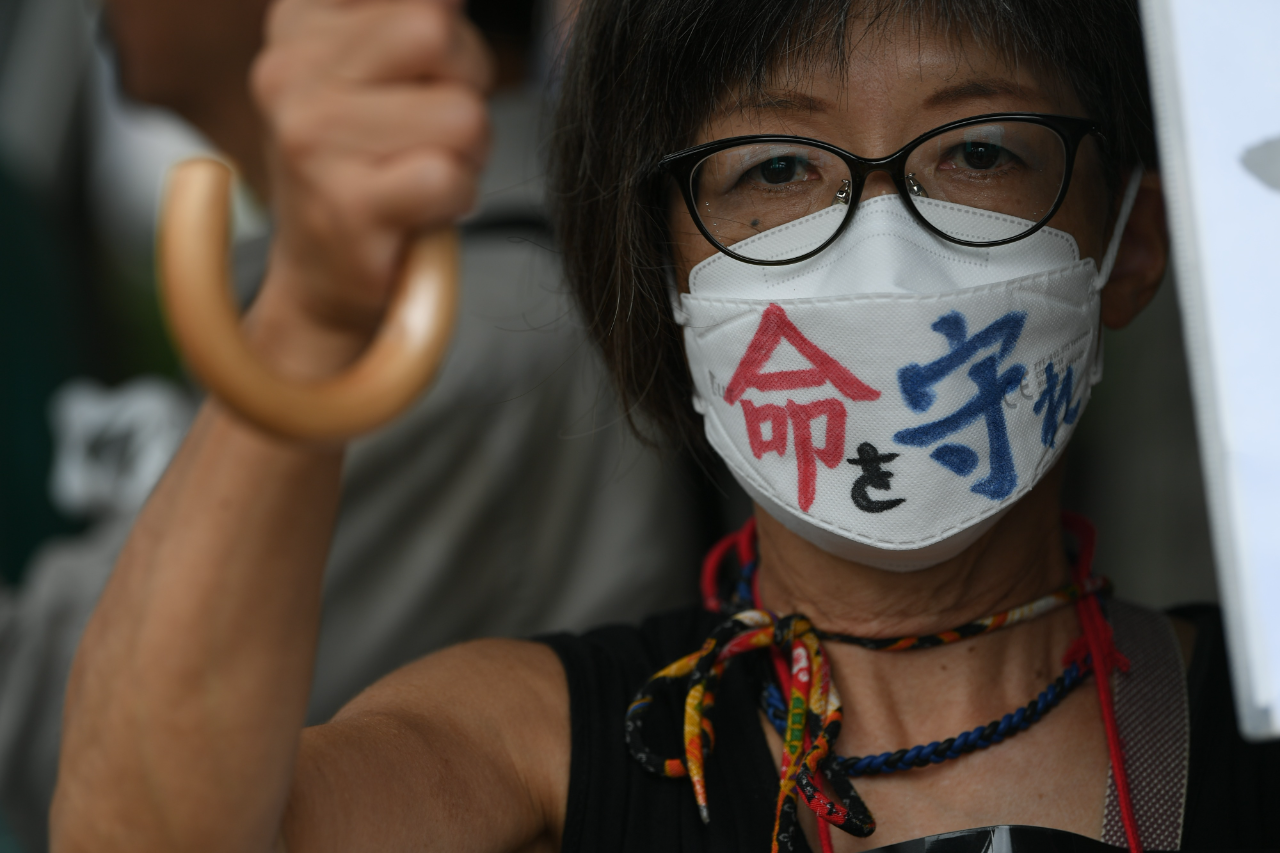We can't Lose Ocean!
Ignoring domestic and foreign opposition, the Japanese government officially launched the discharge of Fukushima nuclear contaminated water at 13:00 local time on August 24.
Ocean University of China issued an article "We Can't Lose the Ocean" on August 24, mentioning that "the ocean is the blue home on which all human beings depend for survival. Japan has put nuclear polluted water in a row, and at the same time placed itself in the international dock. will be condemned by the international community for a long time.”

The picture is from Xinhua News Agency reporter Feng Wuyong. On August 22, Japanese people rallied to protest
According to comprehensive CCTV news reports, the multi-nuclide processing system (ALPS) is the key to the Japanese government and Tokyo Electric Power Company's plan to discharge nuclear contaminated water into the sea. The Japanese side insists that the nuclear-contaminated water treated by ALPS is "treated water", and believes that the "treated water" has reached the standard and can be discharged. But that's not the case.
First, there is no effective treatment technology for many radionuclides in nuclear polluted water.
Fukushima nuclear polluted water contains more than 60 types of radionuclides, such as tritium, carbon-14, iodine-129, etc. Many of these radionuclides have no effective treatment technology, but Japan has been making "the problem is only the tritium element" misleading.
In 2020, the International Environmental Protection Organization pointed out in a survey report titled "Crisis of Contaminated Water from the TEPCO Fukushima Daiichi Nuclear Power Plant" that there is a high concentration of radioactive carbon-14 in the nuclear-contaminated water, and ALPS did not consider removing carbon-14 at the beginning of its design. Report author Sean Bernie, a German researcher, pointed out that TEPCO did not acknowledge the presence of carbon-14 in so-called "processed water" until 2020.
International environmental protection organizations found that ALPS cannot remove radioactive tritium and carbon-14, nor can it completely remove other radioactive isotopes, such as strontium-90, iodine-129 and cobalt-60.

The picture is from Xinhua News Agency reporter Wang Yiliang. South Korea's Democratic Party protests
Second, nuclear pollution of radionuclides in water affects human health.
The Japanese side claims that after dilution with seawater, the tritium concentration in the water will reach less than one-fortieth of the Japanese control standard. However, dilution does not reduce the total radioactive dose of discharged nuclear contaminated water.
Mao Liang, a professor at the School of Environment, Nanjing University, gave an example, "Nuclear radiation exposure is divided into internal exposure and external exposure. Tritium releases beta rays, and tritium water is discharged into the ocean. Algae will use tritium water to synthesize protein organic matter, and algae are Shrimp and fish food, it will be eaten by fish and shrimp, and become the protein in fish and shrimp. Then in the process of eating fish and shrimp, the tritium in the protein may be introduced into the body, and it will be If it becomes a part of the body, long-term internal exposure will occur, which will definitely affect health."
Gao Zhiguo, president of the China Society for the Law of the Sea and former judge of the International Tribunal for the Law of the Sea, said that after these radionuclides enter the marine environment, tritium may not be the most dangerous. The most harmful to humans and marine life is carbon-14. and iodine-129, carbon-14 has a half-life of over 5,000 years, and iodine-129 has a longer half-life. Carbon-14 will accumulate in marine organisms, that is, fish, and the abundance or concentration of carbon-14 accumulation may be 50 times that of tritium.
Third, the scope of influence of nuclear polluted water involves the whole world.
The German Institute of Marine Science pointed out that the coast of Fukushima has the strongest ocean currents in the world. Within 57 days from the date of discharge, radioactive materials will spread to most of the Pacific Ocean. Three years later, the United States and Canada on the other side of the Pacific Ocean will be polluted by nuclear weapons. The impact will spread to the global seas 10 years later.

The picture is from Xinhua News Agency reporter Feng Wuyong. On August 22, Japanese people rallied to protest
The "Pandora's Box" of Fukushima nuclear sewage has been opened, and its impact on the marine ecological environment and human health is unimaginable.
This not only affects the Marine environment, but also poses a huge challenge to the global water quality environment. The difficulty of water quality monitoring has increased sharply, and the water treatment industry still has a long way to go. At present, our company has been deeply engaged in the water quality testing and water treatment industry for many years, and deeply deplores the reality that nuclear sewage affects the water environment.

The Chemins marine environment monitoring solutions are based on the "Internet +" intelligent marine monitoring equipment independently developed and produced, establishes a monitoring network covering the entire sea area, and innovatively proposes the "four-in-one" of refinement, networking, miniaturization and intelligence. The monitoring operation mode can realize real-time monitoring of marine on-site data at a fixed point, timed and qualitatively, and create one-stop solutions for marine environmental quality, marine ecological monitoring, marine forecasting and disaster reduction, and marine pasture monitoring.
Hangzhou Chemins Sensor Tech Co., Ltd. is a high-tech enterprise dedicated to providing hardware and software research and development, manufacturing, sales, technical operation and maintenance services and solutions for water quality monitoring.

Integrated water Oil sensor is the use of soluble oil absorption peaks in spectra and emission peak of the properties, in the spectrum of soluble oil absorption peak emission monochromatic light exposure to water, soluble oil absorb light energy, releasing another emission peak wavelength of monochromatic light, soluble oil emission intensity is proportional to the content of water soluble oil.